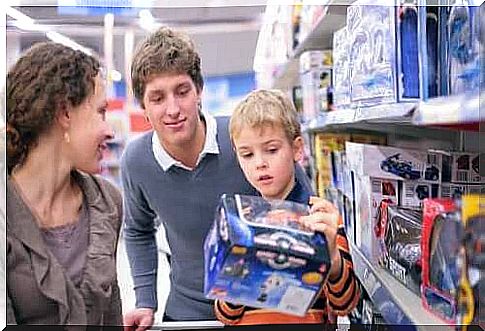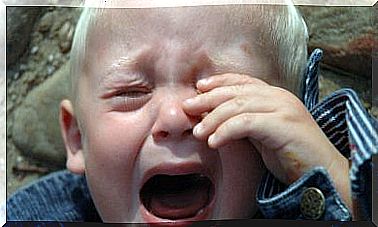Avoid Compulsive Consumerism In Children

Compulsive consumerism in children is a growing problem, nowadays, in developing countries. It is common knowledge that any activity we perform in a compulsive manner is harmful. So, how can we avoid constant consumerism in children? What are the essential elements to prevent this habit?
Around the holidays, compulsive consumerism in children increases even more… if even possible. There are so many messages being directed at us that are promoting massive consumption. This bombardment comes not only from the media – such as television and the internet – but also from family members and friends at school.
The message – whether implicit or implicit – fills us with the conviction that we must keep buying, whether we need it or not. Especially during the holidays, children are the biggest target of advertising campaigns. Almost all television commercials are aimed at this group, to catch their attention.
Without a doubt, the holidays are some of the most beautiful times of the year. These are times filled with family gatherings, festive music, past memories and delicious food. But, the holidays also have a downside as they tend to make us slaves to consumerism. The truth is that our society as a whole has fallen victim to compulsive consumerism.
Compulsive consumerism in children: Born to shop
Bought this for me, buy this, I want it there, and the one I want, I want, I want… If you are a parent, you are probably too familiar with these words, and hear them several times , weekday.
Children, these days, are used to getting everything they want even when they do not need it. Little by little, they become addicted to shopping, making it more and more challenging to deter them from compulsive consumerism.
The author, David Buckingham, addresses this issue in his book, Childhood and Consumer Culture. He claims that the great production of things (books, toys, games, etc.), aimed directly at children, can be traced all the way back to the 18th century (PLUMB, 1982). However, instruction manuals, toys, and clothing for children of nobles and the rich bourgeoisie existed as early as the 16th century (LUKE, 1989).
Child consumer culture
The development of a child consumer culture increased rapidly around the middle of the 19th century. This went hand in hand with the emergence of new post-romantic ideas around childhood itself.
So, children finally got recognition as a special group. As a group, they were considered special, clean, innocent and in need of protective care. And, at the same time, they also became a potential market.
Until now, the world has not stopped exploring this potential market. And, while this is not a new phenomenon, it is true that marketing strategies are becoming more and more aggressive. We have reached a point where children feel like buying everything they see. Even worse, they end up buying everything they see in the media.
Essential elements to avoid compulsive consumerism in children
Below, we will outline some of the guidelines you can use to teach your children about responsible consumption. That way, you can help protect them from unhealthy habits of compulsive consumerism.
Five important elements
- It is important to teach children the difference between what they need and what they just want. You can ask questions such as: “Why do you think it is necessary?”, “What do you want to use it for?”, “Do you need it to perform a specific task?”
- It is good to teach them to manage their own money. Children should learn to save money as they do not have money for later if they use them all at once. It’s a good idea to give them a piggy bank. That way, they can save up for the things they really want, instead of having their parents buy everything for them.
- There is nothing more satisfying than watching his own efforts bear fruit. Children should understand that money does not grow on trees and they are not easy to earn. One way to teach them this is by giving them money for certain tasks around the house (in addition to their regular duties).
- Learn to reuse objects that no longer serve their original purpose or are no longer in use. If possible, you can replace objects, bought in stores, with handmade things. Give the children the opportunity to make their own toys, as it is beneficial in countless ways.
- Help them understand how advertising works. The little ones need to realize how manufacturers and advertising agencies use tricks to sell certain products. This knowledge will help children more deeply understand what they see in an advertisement. They will look for more information and make informed choices when making a purchase.
By following the tips above, you can help your children become more informed and responsible consumers. Furthermore, your children will learn to value what they have and become more economical with their money and possessions.









